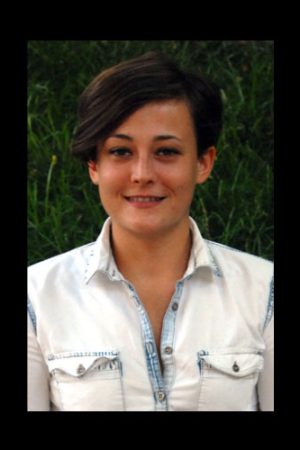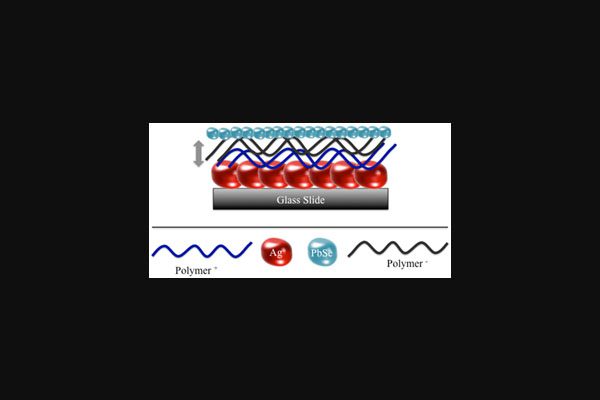Kathleen Dipple

Kathleen Dipple

Employing Surface Plasmon Resonances to Boost Effectiveness of Multiple Exciton Generation in Lead-Based Quantum Dots
Abstract:
Harvesting the sun’s energy at a high efficiency and low cost is a vital step towards replacing fossil fuels. Colloidal quantum dots (QDs) are promising materials that have great potential for solar applications due to their size dependent optical properties and high-absorption cross-sections.1 Lead-chalcogenide QDs can be tuned so that their band gap is close to optimal for light absorber in a single junction solar cell. Moreover, these near IR-absorbing QDs can generate multiple excitons after absorption of a suitably energetic photon, enabling external quantum efficiencies in excess of 100 % EQE for blue and UV light.2 Light harvesting is most efficient for optically thick materials that are physically thin. That way, all incoming light is absorbed, and the resulting excitons and charge carriers do not have far to travel to reach an electrode. In addition, for cells that utilize multiple exciton generation, it is critical that they absorb as much UV and blue light as possible. One way to boost the optical density of QD solar cells is to take advantage of the optical antenna effect of plasmonic metal nanoparticles (NPs). These NPs support surface plasmon resonances that generate very large local electric fields and increase photo-absorption in nearby chromophores. The goal of this work, was to take advantage of this effect to demonstrate increased light absorption in QDs, especially above the energy threshold for multiple exciton generation (MEG). My principal aim has been to unravel the factors that control the coupling between QD excitons and plasmon resonances in Ag NPs by controlling the size and shape of the NPs as well as the interaction distance between NPs and QDs (Figure 1). I observed energy transfer between NPs and QDs using time-resolved and steady state photoluminescence studies, and, ultimately, demonstrated that Ag NPs could effectively increase QD photoabsorption for photons with energies both above and below the MEG threshold. This is a vital step toward enhancing QD solar cells and boosting the importance of MEG in metal-coupled QD systems. This research is important for the development of low cost, high efficiency solar cells in addition to a wide range of optoelectronic applications.
Sponsoring Chair: Dr. Thomas Schmedake
Committee: Dr. Christopher Bejger, Dr. Haitao Zhang, Dr. Yuri Nesmelov, Dr. Marcus Jones
Defense Date: Friday, May 10, 2019 at 9:00 AM